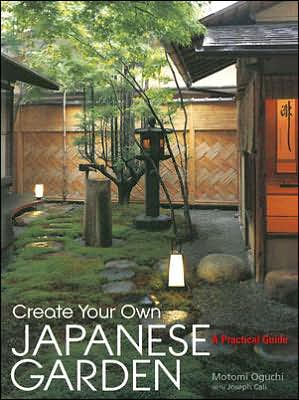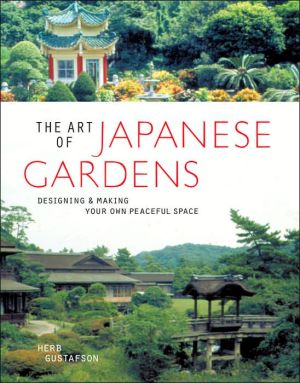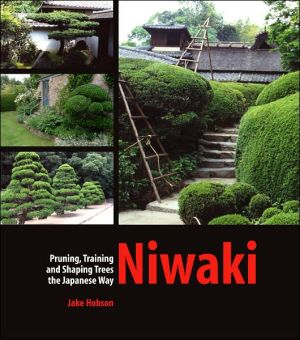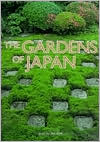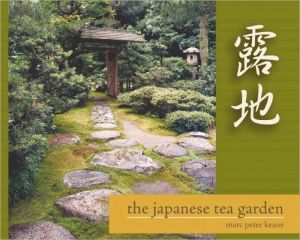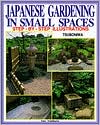Create Your Own Japanese Garden: A Practical Guide
In this book, renowned garden designer Motomi Oguchi offers the reader a step-by-step, practical approach to creating Japanese gardens, drawn from a wealth of experience that covers thirty years and encompasses the design of more than 400 gardens. The author uses real examples from gardens he has designed, constructed, and photographed to illustrate his key points, approaching each work from the perspective of the home or building owner.\ Oguchi begins with front gardens, as these are...
Search in google:
In this book, renowned garden designer Motomi Oguchi offers the reader a step-by-step, practical approach to creating Japanese gardens, drawn from a wealth of experience that covers thirty years and encompasses the design of more than 400 gardens. The author uses real examples from gardens he has designed, constructed, and photographed to illustrate his key points, approaching each work from the perspective of the home or building owner.Oguchi begins with front gardens, as these are usually what one encounters first when entering a home. Typically, these front plantings are not defined Japanese garden types but rather, physical areas. He then moves on to tsubo niwa (courtyard gardens) and kare sansui (dry gardens) that might be found in the middle or rear of a building, or any available small space. Next, he introduces tea and tree gardens, which are more likely to be sections of a larger garden; and highlights specific characteristics and conditions of interior gardens.Within each chapter are general layouts and methods of developing the various gardens, which precede specific, step-by-step instructions. The author also offers practical and affordable variations on more ambitious designs and shows how they can be adapted to the readers home or building. In addition, Oguchi emphasizes the importance of proper maintenance and offers suggestions for special touches and restoration. Publishers Weekly Oguchi, longtime designer of Japanese gardens and author of more than 18 books on the subject in Japanese, offers English speakers both an overview and practical knowledge of this easily recognized but to many Westerners mysterious art form. Oguchi describes the Japanese garden's relation to architecture from the ancient era to the mid-19th century, tracing its evolution from the lavish hills, ponds and waterfalls of early estates to the inward-turning, abbreviated and abstracted gardens of urban townhouses. He calls the guidelines of Japanese garden design "naturalness, studied tastefulness, and harmony," tempered by flexibility for "site conditions, current needs and desires, and self-expression," and presents essential "design devices" such as asymmetry, miekakure(hide and reveal). Most of the book gives concrete details on how to design and build a garden for the home or small business, using as examples the author's designs for restaurants, homes and his traditional teahouse. With precise instructions and illustrations for building typical elements such as bamboo fences and stone bridges, the book gives Americans all the information they need to create authentic Japanese gardens. The lack of a glossary may make it hard for readers to retain meanings of the many Japanese terms strewn throughout the text. (Aug.)Copyright 2007 Reed Business Information
Introduction: The Intimate Relationship of House and Garden 6Approaches, Entrances, and Front Gardens 16A Soba Restaurant in a Wooded Retreat 16Theme, Layout, and Elements 18Creating the Garden 20Constructing a Stone Walkway 22Constructing a Misu Gaki Bamboo Fence 24General Techniques: How to Handle Bamboo 26A Modest Sukiya-style Environment for a Sukiya-style House 29Theme, Layout, and Elements 30Creating the Garden 32Entrance Gate and a Gyo-style Nobedan 33Approach and Entrance Variations 36An Economic "Weed" Garden for the Sakura Noodle Restaurant 41Theme, Layout, and Elements 42Making the "Weed" Garden 44Courtyard and Dry Landscape Gardens 48Small Courtyard Garden for a Modest Home 48Theme, Layout, and Elements 50Creating the Garden 52Creating an Ajiro Gaki Plaited Bamboo Fence 54Creating a Nure-en Deck 57Tsubo Niwa and Kare Sansui Variations 58"Ancient" Dry Landscape Garden for a Modern Three-story Residence 65Theme, Layout, and Elements 65Creating the Design 68Creating a Stone Bridge 70Creating a Katsura Gaki Bamboo Fence 72General Techniques: Garden Sand and Pattern Making 74Tea Gardens, Tree Gardens 76Tea Garden of the Author's Residence 76Theme, Layout, and Elements 78Creating the Garden 80Tea Garden Variations 82Harmonious Blend of Japanese and Western Style 89Theme, Layout, and Elements 90General Techniques: Constructing a Basic Crane-and-Turtle Island 94General Techniques: Restoration of a Waterfall and Gogan Setting 96General Techniques: Planting and Arranging Garden Trees 100General Techniques: Handling Stone 102Interior and Veranda Gardens in Commercial Spaces 104A Garden of Large-scale Bonsai 104Theme, Layout, and Elements 104Creating the Garden 108Constructing the Indoor Stream Garden 110Constructing an Indoor Tea Garden 112Constructing a Small Veranda Garden 114Terrace Garden of Fujiiso Hotel 115Creating the Garden 115Constructing the Ryoanji Gaki 116General Techniques: Assembling and Placing Stone Lanterns 117Special Touches, Restoration, and Maintenance 120Making a Basic Fuyugakoi 120Transplanting Trees 124Yukitsuri 126Kadomatsu 126Restoring a Bamboo Fence 126Maintenance and Restoration 127
\ Publishers WeeklyOguchi, longtime designer of Japanese gardens and author of more than 18 books on the subject in Japanese, offers English speakers both an overview and practical knowledge of this easily recognized but to many Westerners mysterious art form. Oguchi describes the Japanese garden's relation to architecture from the ancient era to the mid-19th century, tracing its evolution from the lavish hills, ponds and waterfalls of early estates to the inward-turning, abbreviated and abstracted gardens of urban townhouses. He calls the guidelines of Japanese garden design "naturalness, studied tastefulness, and harmony," tempered by flexibility for "site conditions, current needs and desires, and self-expression," and presents essential "design devices" such as asymmetry, miekakure(hide and reveal). Most of the book gives concrete details on how to design and build a garden for the home or small business, using as examples the author's designs for restaurants, homes and his traditional teahouse. With precise instructions and illustrations for building typical elements such as bamboo fences and stone bridges, the book gives Americans all the information they need to create authentic Japanese gardens. The lack of a glossary may make it hard for readers to retain meanings of the many Japanese terms strewn throughout the text. (Aug.)\ Copyright 2007 Reed Business Information\ \
